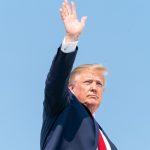The July 13 assassination attempt on former President Donald Trump is drawing attention not just for its audacity but for the remarkable degree of negligence involved in the security preparations. A bipartisan House task force has dropped a 53-page interim report that claims this event was not only preventable but indicative of a system flailing under its own confusion. Apparently, even the Secret Service needs to be reminded how to secure a perimeter when dealing with threats to a former president.
The House task force laid bare shocking lapses in coordination and planning—or should one call it a game of passive “Who’s on First?” before the rally in Butler, Pennsylvania. The report highlights a multitude of missed opportunities, claiming that local law enforcement had spotted the would-be assassin, Thomas Matthew Crooks, acting suspiciously on several occasions before the rally. Yet, without a solid communication system or a clear plan, these observations crumpled like stale bread before any action could be taken. Apparently, “fragmented lines of communication” were a more significant barrier than the actual chain-link fence separating the rallygoers from his position.
The House task force on the attempted assassination of former President Trump detailed flaws in the planning and security surrounding Trump’s July 13 rally in Butler, Pa., in an interim staff report released Monday.
READ MORE HERE: https://t.co/Ag14Vh97K7
— WMBD News (@WMBDNews) October 21, 2024
The report dissects various security failures, grouping them into three categories that could have easily been labeled “Oops,” “My Bad,” and “Seriously?” First on the agenda was advance planning—or the lack thereof. The Secret Service failed to ensure that local law enforcement knew what areas were secured, not leaving room for any operational flexibility. The task force could not believe the Secret Service allowed the AGR complex—where Crooks eventually established his rooftop shooting position—to remain unsecured. This place was not tucked away in the backwoods but conveniently located near the main road and had clear lines of sight to Trump’s stage. It would have been easier to guard a turkey on Thanksgiving.
In what reads like a script from a comedy of errors, a local law enforcement officer highlighted that the command structure was all over the place. The Secret Service was apparently under the impression that everything was under control, while officers on the ground felt like they were left on their own to play a dangerous game of “guess what the Secret Service is thinking.” They could have easily deployed snipers or additional personnel to watch over the AGR complex, but the Secret Service wasn’t exactly diligent in asking for help—or listening when assistance was offered.
Even as local snipers noticed Crooks behaving suspiciously, their insight was unfortunately lost in translation. With one officer sighting Crooks just before the rally, it seems that nobody ever connected the dots to alert Trump’s security detail. This is probably not what one would want to see happen when high-profile politicians are involved—especially after significant warnings had been raised. Instead, the Secret Service had the kind of communication setup that would make a dial-up internet connection seem modern.
The conclusion drawn from the report lays the blame squarely on the shoulders of those responsible for communication and planning, emphasizing that this incident should never have occurred. The mere fact that Crooks managed to shoot Trump—albeit unsuccessfully—before being taken out by a Secret Service sniper paints a picture of systemic failure. So while the target may have survived, the security arrangements have failed spectacularly, serving as a grim reminder that with the threats facing conservative leaders, mediocre planning could have disastrous consequences.




